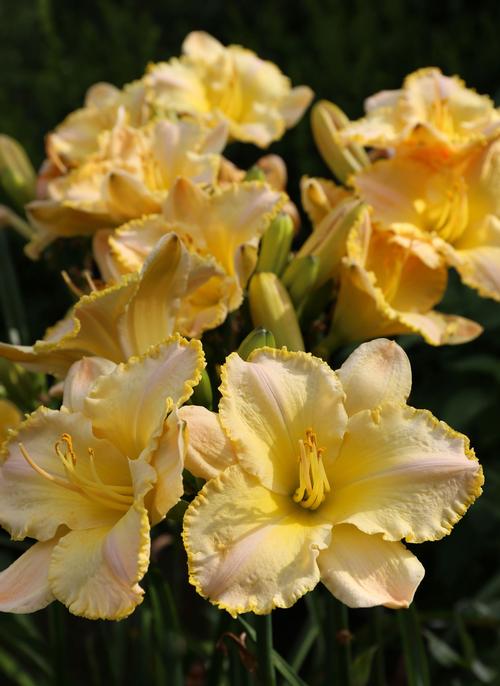How to Put Daylilies to Work in Your Yard and Garden
Few plants can rival the daylily for toughness, adaptability and easy care. These summer-blooming perennials perform as well in Minnesota as they do in Florida, and will grow in almost any type of soil. Daylilies are not troubled by diseases or pests and once established, they bloom for decades with virtually no attention.
Modern daylilies are pretty enough to deserve a place in your perennial garden. But these plants have so much more to offer and can be put to work solving a myriad of landscaping challenges.
Does your yard have a place where the soil is poor and grass refuses to grow? Is there a low area where water tends to collect after a rain? Maybe there's a steep slope that's hard to mow or a rocky area with thin soil. Daylilies can turn these areas into assets rather than problems.
Easy Plants With Lots to Offer
The daylily’s botanical name, hemerocallis, means "beauty for a day,” and it's true that the flowers rarely last for more than a single day. However, each plant produces multiple flower stems (called scapes) with at least a dozen flower buds that open over a period of several weeks.
Most of the daylilies planted by home gardeners are hybridized versions of three non-native species: Hemerocallis fulva (orange-flowered plants that have naturalized along roadsides) Hemerocallis citrina (fragrant yellow flowers that open in the evening), and Hemerocallis flava (fragrant, pale yellow flowers).
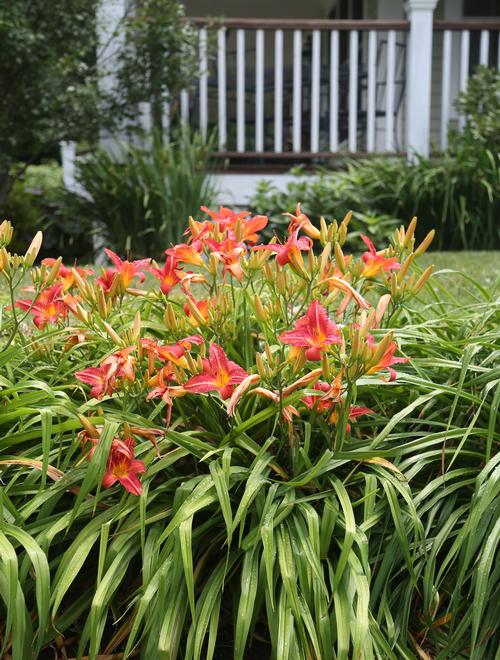
Navigating the Choices
Today there are more than 15,000 daylily cultivars in commercial production. Flower colors include red, orange, yellow, pink and purple, with lighter and darker shades, bi-colors and tri-colors. Some flowers feature contrasting throats, eyes or petal edges. The flowers may be single or double, with petals that are wide or narrow, smooth or ruffled. There are compact varieties that grow just 12” tall, and others that can be waist-high, with foliage that's thin and grassy, coarse and strappy or anywhere in between.
With so many cultivars to choose from, shopping for daylilies can be daunting. Here are some tips to help you find your way.
Daylilies are typically grouped by bloom time (early, mid-, and late), flower color (white to purple), scape height (6 inches to 4 feet tall), or flower form (trumpet, double, ruffled, recurved). Start by narrowing in on the colors and flower forms you find most appealing. Next, select a height that's appropriate for the location. Height is usually the height of the flower scape as opposed to the height of the foliage. Finally, consider bloom times, with the goal of getting a mix of early, mid and late-season flowers.
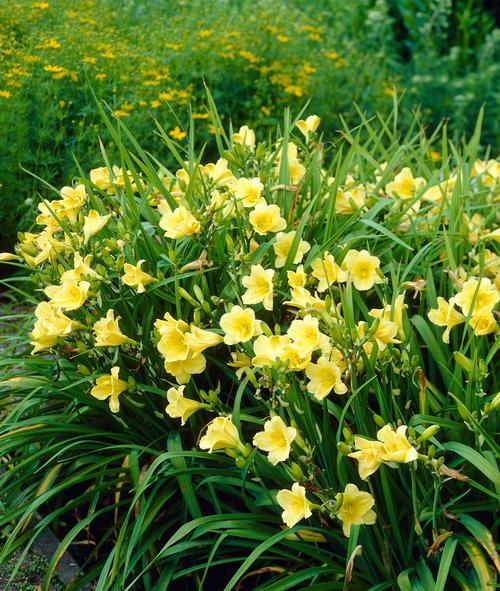
Navigating the Terms
Fans: A single daylily plant may be referred to as a division, clump or fan. These names are used interchangeably. When a mature daylily is divided, it can be broken up into individual fans of foliage with roots attached. A plant with 3 fans will be larger than a plant with 1 fan.
Diploid: Diploid daylilies have 22 chromosomes. These plants have medium-size flowers and a graceful, old-fashioned form. The blossoms may be single or double.
Tetraploid: Tetraploid daylilies have 44 chromosomes and display larger, more intensely colored flowers with stronger, sturdier scapes and thicker leaves. The extra chromosomes may be due to natural variations or artificial intervention by breeders.
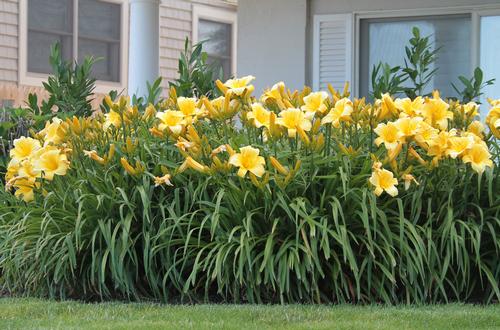
Miniature: These compact varieties range from 12 to 25 inches tall. Flowers are usually smaller, too. These plants are excellent for small spaces, lining a walk or for planting in the front of a perennial border.
Dormant: Most daylily cultivars die back to the ground in the fall. These are the best daylilies for cold climates.
Evergreen/Semi-Evergreen: These daylilies retain their foliage and stay relatively green all year-round. They grow best in warm-climates with mild winters.
Reblooming: Some daylily cultivars flower in early summer and then bloom intermittently right up until frost. Remove the faded flower heads to encourage reblooming.
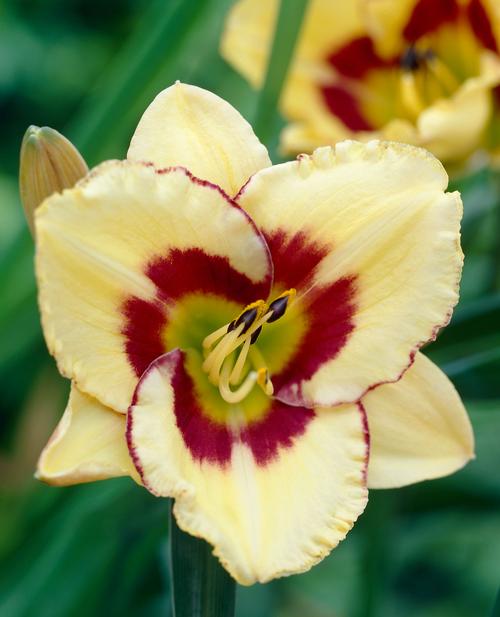
Landscaping With Daylilies
Here are some of the many ways these plants can be put to work in your yard and garden:
• Mass plantings. Daylilies are vigorous plants that multiply over time. Plants that are initially a foot apart will gradually fill in to create a weed-resistant border. You can plant a single cultivar, plant blocks of two or more different cultivars, or plant a random mix of many different colors, heights and bloom times.
• Bordering a fence, stone wall or structure. Want your yard to look neat without a lot of trimming? Plant a strip of daylilies in those areas your mower can't reach. They will form a dense, weed-proof display.
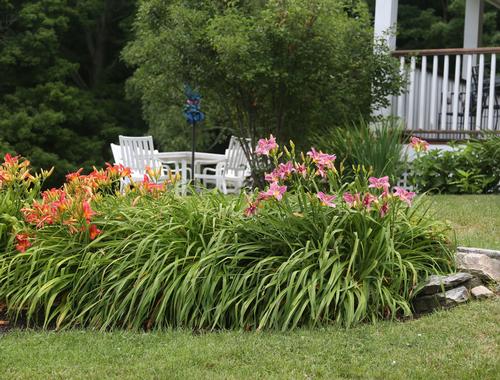
• Containers. Dwarf daylilies such as Stella de Oro, Fragrant Returns and Little Grapette grow well in containers. Use large pots that are at least 15-18" in diameter. In growing zones 4-6, the pots will need to be protected from winter cold.
• Shrub borders. Daylilies can have a shrub-like presence and can hold their own when planted among woody landscape plants like spirea, potentilla, hydrangea and dwarf evergreens.
• Difficult slopes. Don't struggle trying to mow a difficult area. Use plastic or cardboard to kill the grass and then plant daylilies instead. More color. Less mowing.
• Daffodil partners. Daylilies and daffodils like the same growing conditions and do not compete with each other. When the daffodils have finished blooming, the daylily foliage will hide the fading leaves.

Planting and Care for Daylilies
Daylilies flower best when they are grown in full sun -- at least 6 hours per day. With less sun, the plants will be healthy but you'll get fewer flowers. For best results, give the plants a yearly topdressing of compost or granular fertilizer.
Container-grown daylilies may be planted at any time during the growing season. If you buy daylilies by mail, plant the roots within a few days of receiving them. In the South, it's best to plant in spring or fall while temperatures are relatively cool. In the North, daylilies should be planted in spring so their roots have time to get established before winter.
Before planting, take time to loosen the soil and amend it with compost. Space the plants 12 to 18 inches apart. Position the crown (where the roots meet the stem) about 1” below the soil surface. Water well and then cover the soil with bark or straw to help conserve moisture and discourage weeds from growing. Water as needed throughout the first growing season.
Daylilies are rarely troubled by pests or disease. If you cut or rake away the old foliage in spring, it will encourage good air circulation and discourage disease.
To learn more about daylilies, you may be interested in reading All About Daylilies.
